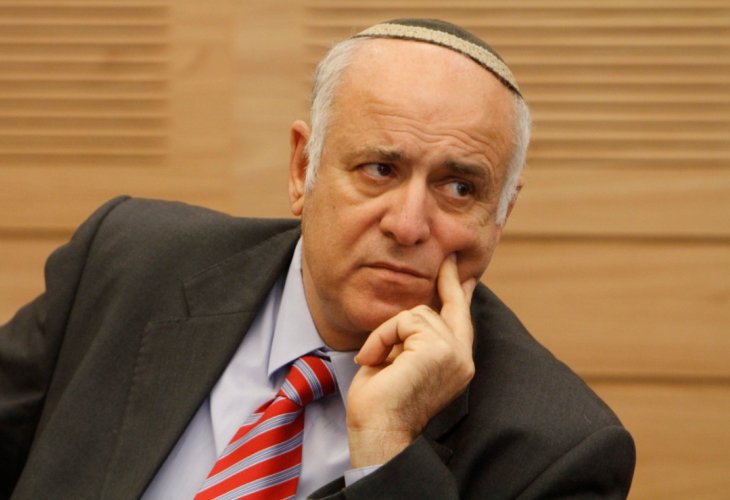Torah Personalities
Who Was the Rambam? The Life, Legacy, and Genius of Maimonides
How Maimonides rose from persecution and loss to become the greatest halachic authority, philosopher, and healer of the Jewish world
 Illustration of Rambam with the caption: 'Rambam - Yahrzeit 20th of Tevet'
Illustration of Rambam with the caption: 'Rambam - Yahrzeit 20th of Tevet'Rabbi Moshe ben Maimon — known as the Rambam, was born in 1135 (Hebrew year 4895) in Córdoba, Spain, to his father Rabbi Maimon, who served as a judge in the city.He passed away in Egypt on the 20th of Tevet, 1204 (Hebrew year 4965). According to several traditions, the Rambam’s lineage traces back to Rabbi Yehuda HaNasi, the compiler of the Mishnah.
Scholar, Thinker, and Philosopher of Global Influence
The Rambam embraced a highly rational, innovative intellectual approach influenced even by non-Jewish philosophers. He was recognized as a major philosopher not only in Jewish circles, but also in the Muslim and Christian worlds.
In Arabic he was known as Mūsā ibn Maymūn or by his full Arabic name: Abu Imran Musa ibn Maimun ibn Abdallah al-Qurtubi al-Isra’ili
(“Musa, son of Maimun, the Cordoban Israelite”).
His Extraordinary Impact
The Rambam’s vast scope of activity is what earned him his exceptional status. He was:
A physician and scientist
One of the greatest medieval philosophers
The spiritual leader of Egyptian Jewry
The most prominent Jewish figure of his generation
One of the greatest halachic authorities of all time
A Life of Hardship, Wanderings, and Leadership
When the Rambam was 13, his family was forced to flee Córdoba due to anti-Jewish persecution. They wandered throughout Spain and eventually moved to Fez, North Africa.
However, Muslim fanaticism intensified there as well. The Rambam’s teacher, Rabbi Yehuda HaKohen Ibn Shoshan, was killed for sanctifying God’s name. From there, the Rambam traveled to the Land of Israel, and later settled permanently in Egypt.
While living in Fustat (Old Cairo), the Rambam married the daughter of Rabbi Mish’al HaLevi ben Rabbi Yeshayahu HaChassid HaLevi, son-in-law of Rabbi Dosa ben Yaakov. Soon after, his only son, Rabbi Avraham ben HaRambam (1186–1238), was born.
The Rambam as Physician and Royal Doctor
Although the Rambam served as the religious leader of Cairo’s Jewish community, he supported himself financially through money invested by his brother David, a merchant and shipowner.
In 1177, David drowned in a shipwreck. The loss devastated the Rambam and caused him a year of illness and mourning. Lacking any other source of income, the Rambam trained intensively in medicine and became one of the leading physicians in Cairo.
By 1185 he was appointed physician to the vizier Al-Qadi al-Fadil, and soon afterward became physician to the famed ruler Salah ad-Din (Saladin) and later to his son Al-Fadil.
Why Yemenite Jews Follow the Rambam
The Rambam maintained active correspondence with Jewish communities throughout the diaspora, answering halachic and theological questions. One community that kept close contact with him was the Jewish community of Yemen, which accepted him as their primary halachic authority.
During periods of persecution in Yemen, he composed the famous “Iggeret Teiman” (Epistle to Yemen)” to encourage and guide them.
The Rambam’s Writings
His major works include:
Mishneh Torah
Guide for the Perplexed (Moreh Nevuchim)
Commentary on the Mishnah
He also wrote many early works he never had the chance to edit or publish. Many were lost, and only fragments remain.
Among his incomplete works:
Commentary: “Difficult Laws in the Entire Talmud”
“Laws of the Jerusalem Talmud” (modeled after the Rif’s work on the Babylonian Talmud)
Notes and critiques on the Rif
“Ma’amar HaIbbur” — on the Jewish calendar and leap years
11 medical books, including:
“Book of Asthma”
“Medical Aphorisms” (Pirkei Moshe)
“Treatise on Hemorrhoids”
“Names of Drugs”
“On the End of Life”
The Mishneh Torah: His Greatest Masterpiece
The Rambam’s halachic code Mishneh Torah is considered one of the greatest works in Jewish history, known for being systematic, clear, and revolutionary.
The Rambam’s Portrait
The famous image of the Rambam comes from an illustration published in the 18th-century book Thesaurus Antiquitatum Sacrarum. Its author claimed it was based on an ancient engraving.
However, the common opinion today is that the portrait is imaginary and does not reflect the Rambam’s real appearance.
Where Is the Rambam Buried?
Although the Rambam passed away in Egypt, he is unquestionably buried in Tiberias, as affirmed by:
Rabbi Chaim Vital, student of the Arizal
Rabbi Yosef Sambari of Egypt
He wrote: “His body was first buried in his study hall in Egypt, and from there they brought him to the Land of Israel and buried him in Tiberias.”

